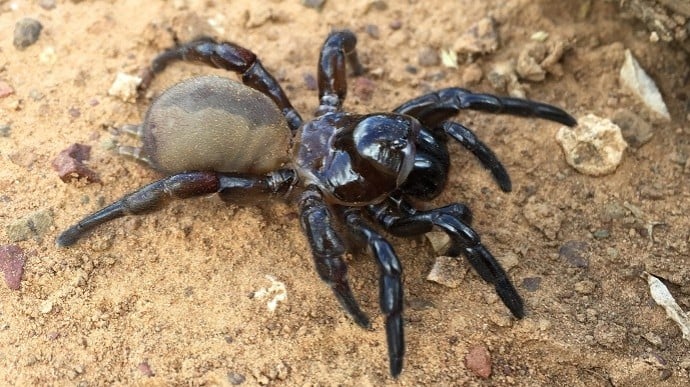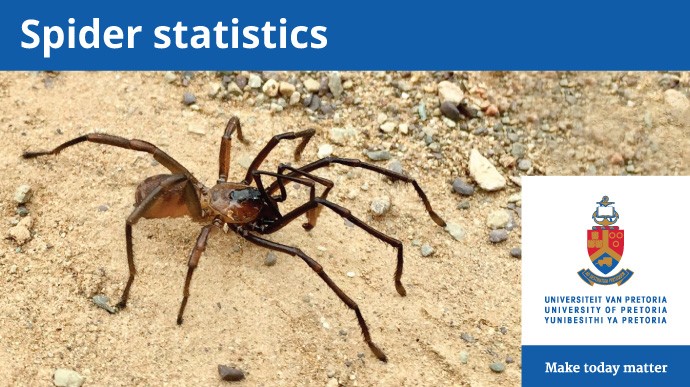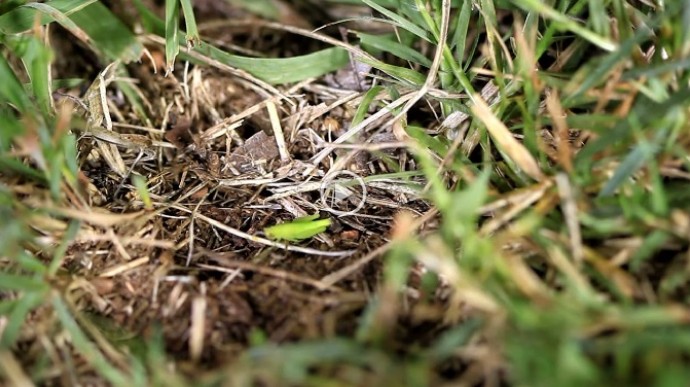Researchers at the Mammal Research Institute (MRI) and the Department of Zoology and Entomology at the University of Pretoria (UP) have conducted a global review of studies on the entanglement of pinnipeds in oceanic plastic pollution, and found that 67% of these aquatic mammals are at risk of entanglement. Pinnipeds have front and rear flippers, and the group includes seals, sea lions and walruses.
“While the stats are already alarming, considering that so many entangled cases are unreported and that there are ocean areas that have not been studied, pinniped entanglement is potentially much higher than 67%,” says MSc student Emma Jepsen and Professor Nico de Bruyn, after reviewing three international databases in order to compile a comprehensive overview of all reported pinniped entanglements spanning the past 40 years.
The world’s oceans have become garbage sites – in fact, about 10 to 20 million tonnes of plastic end up in our oceans every year, with the most heavily polluted being the North Pacific, followed by the Indian, North Atlantic, Mediterranean, South Pacific and South Atlantic oceans. Oceanic plastic pollution is responsible for the death of many marine species, either from ingestion or entanglement.
Ingested plastic can disrupt the reproduction of animals, increase their susceptibility to disease, change hormone production or can be fatal. Studies have also shown that plastic on the sea floor can negatively affect oxygen levels in the sediment, which can alter ecosystem function.
Entanglement threatens at least 243 marine species and is said to be the cause of more deaths than plastic ingestion. Animals get entangled in plastic material such as fishing gear (nets and ropes) that is abandoned, lost or discarded; as they try to untangle themselves, they can become exhausted and drown. It could also limit their full range of motion, which prevents them from being able to forage, or the material entangling them could injure them, causing infection.
Yet having reviewed several studies, UP researchers found that most of them failed to provide comprehensive information – showing reporting bias, skewed research efforts and an incomplete understanding of plastic pollution and pinniped abundance overlap. The MRI review highlights an urgent need to gain a better understanding of the entanglement problem globally.
“Available information is mostly from developed countries, with a very low reporting rate on the issue of entanglements from developing nations,” say Jepsen and Prof De Bruyn. “The demand for plastic products and fishing activities is not exclusive to developed nations.”
Ocean currents and circulation also blur the distinction between developed and developing nations’ maritime territory by the dispersal of plastic. “To determine if there is a true bias toward pinniped entanglements occurring around developed nations, more studies need to be conducted in developing countries/regions, or such nations need to publish their data via appropriate outlets.”
China receives 56% of the world’s plastic waste for reprocessing by small unregulated businesses, yet the country is ranked the highest globally for its mismanagement of plastic waste. “Asian waters are also a hotspot for fishing activities, which means the amount of abandoned, lost and discarded fishing gear is likely to be plentiful,” says Jepsen. The review notes with concern that countries in Asia are particularly conspicuous in their absence of publications.
The university’s review highlights the need for further investigation to determine whether non-entangled species are evading entanglement or if they are being understudied. “Out of the 33 species of pinnipeds, two thirds have been recorded as entangled, seven of which are already undergoing population declines,” says Jepsen. “Of these seven, six have been recorded as entangled.”
With population numbers already at risk, entanglements have the potential to affect these numbers considerably. “Some species, like the Mediterranean monk seal (Monachus monachus) which has between only 500 and 600 individuals, would likely suffer severe demographic consequences if even a few individuals are entangled,” note the study authors.
Jepsen and Prof De Bruyn explain that certain species of pinnipeds are prone to entanglement because they propel themselves in water with their elongated fore flipper, which would prevent them from freeing themselves should they become caught up in plastic.
The review points out the need for broader geographical efforts in the reporting of entanglements and improved quantification of pinniped populations entangled, specifically looking at factors such as sex and age, in global efforts to pinpoint priority mitigation regions.
Marine clean-up initiatives need to be prioritised, particularly because of the longevity of plastics in the environment. It is high time that industry and governments take action to combat ocean plastic pollution as well as the overexploitation of marine life, as this will lower the chances of fishing gear polluting oceans.
While much needs to be done to address this crisis, the MRI review raises awareness that comprehensive studies are needed and that current information clouds our understanding of the effect of plastic pollution on pinnipeds and marine life in general.
Emma Jepsen & Professor Nico de Bruyn
July 8, 2019

 Story
Story
Nine new trapdoor spider species have been discovered in the Great Karoo by researchers at the University of Pretoria’s (UP) Department of Zoology and Entomology, and the Agricultural Research Council (ARC).
 Infographic
Infographic
Trapdoor spiders hide in underground burrows that are covered with a cork-like lid made of soil, silk and plants. Learn more about trapdoor spiders with this infographic.
 Video
Video
Watch carefully to see how a trapdoor spider catches its prey through its trapdoor.
Copyright © University of Pretoria 2024. All rights reserved.
Get Social With Us
Download the UP Mobile App